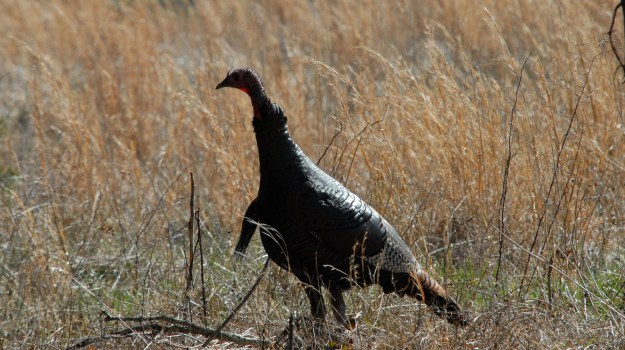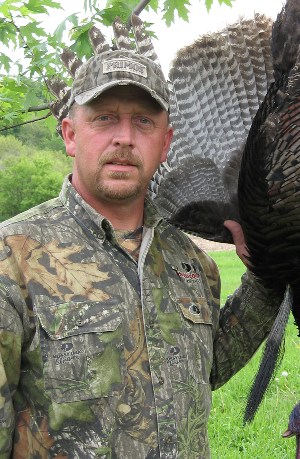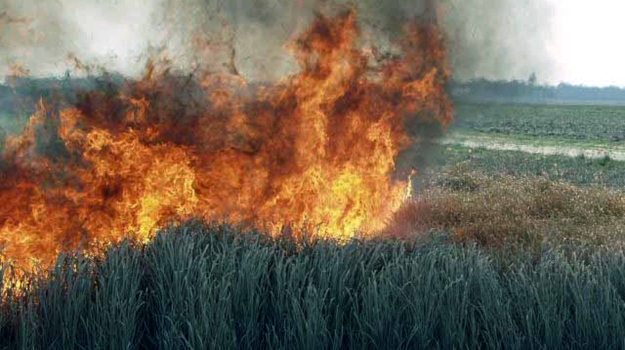
Editor’s Note: Perry Peterson of Manchester, Iowa, is Mossy Oak’s turkey manager for nine states in the Midwest. He has been hunting turkeys since 1994, and wearing Mossy Oak for the last 12 years.
My first hunt in Nebraska took place on May 1 one year for Merriam’s turkeys. I didn’t really know what to expect, because I never had hunted Merriam’s gobblers previously. There wasn’t much green on the trees and bushes yet, so I chose to wear Mossy Oak Obsession camo for this hunt. Before I left home, I didn’t know what kind of terrain we would encounter, so I took Mossy Oak Obsession with me. That pattern will blend-in with almost-any terrain and has enough contrast to break-up your outline and still blend-in with your surroundings.
 The first turkey we called to was out in the middle of a green field, so we set-up in some small trees along a brushy fence line. When we first spotted this gobbler, he was quite a bit higher than we were on a long sloping ridge in the middle of the field. I knew he could see a long distance. I realized if we tried to set-up decoys then this gobbler would spot us. The wind was blowing 30 miles per hour, and we were downwind from him about 300- to 400-yards away. I didn’t think a diaphragm call or a slate call would be able to reach that turkey, so I yelped loudly to the gobbler on a Primos (www.primos.com) box call. As soon as I finished the first series of calls, the gobbler turned and came toward us.
The first turkey we called to was out in the middle of a green field, so we set-up in some small trees along a brushy fence line. When we first spotted this gobbler, he was quite a bit higher than we were on a long sloping ridge in the middle of the field. I knew he could see a long distance. I realized if we tried to set-up decoys then this gobbler would spot us. The wind was blowing 30 miles per hour, and we were downwind from him about 300- to 400-yards away. I didn’t think a diaphragm call or a slate call would be able to reach that turkey, so I yelped loudly to the gobbler on a Primos (www.primos.com) box call. As soon as I finished the first series of calls, the gobbler turned and came toward us.
When the turkey reached a sandy road about 150- to 200-yards away, I toned down my calling by using a mouth diaphragm call. As soon as he heard my call, the bird gobbled and started coming down the road to pass right in front of the spot where I had chosen to set-up. As the turkey came close to the fence line, I was concerned he would go under the fence or fly over it. He was about 10 yards to my left, and I couldn’t get a shot at him. Then he turned around and came out to the old sandy road again. I took a shot at about 25 yards. If you like to travel and hunt gobblers in different states like I do, you need to carry a variety of calls. On a windy day, you hardly can beat a box call to reach out and touch a gobbler at long range. You really can call loudly on the box call. Then, as the bird commits to come to you, you can reduce the volume by using a diaphragm call or a pot call.
Day 2: Perry Peterson Takes a Three-Bearded Turkey
Tomorrow: How Perry Peterson Handles a Turkey Duo Behind Him




























